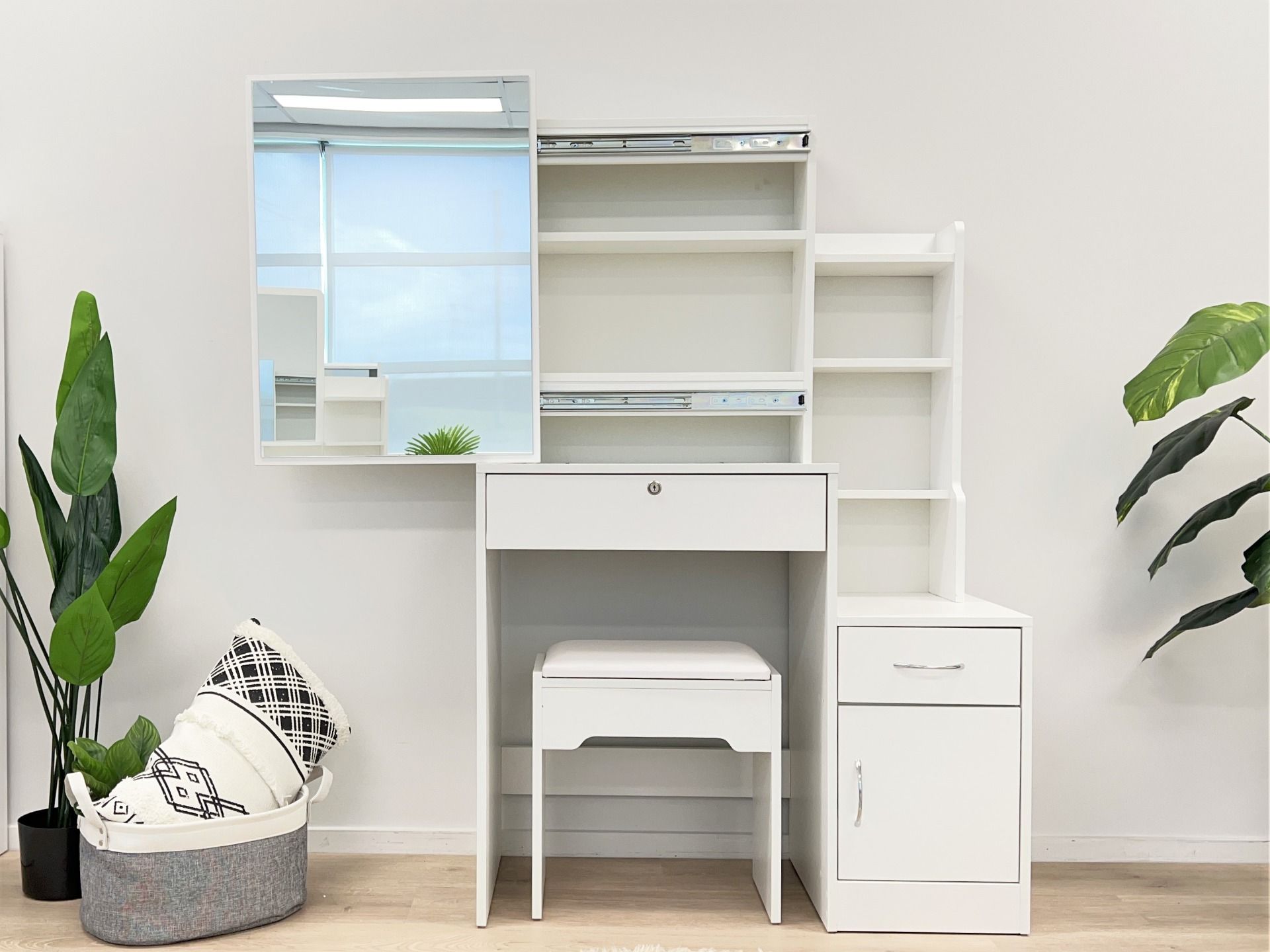The Timeless Charm of Dressing Tables: A Reflection of Personal Style

Introduction:
In the realm of interior design and personal grooming, dressing tables have held a special place for centuries. These elegant pieces of furniture are not merely utilitarian; they are a reflection of personal style, taste, and the pursuit of self-expression. As we delve into the world of dressing tables, we uncover their historical significance, evolving designs, and enduring appeal that transcends time.
Historical Roots:
The origins of dressing tables can be traced back to the 17th century when they emerged as a symbol of opulence and sophistication. Initially known as “toilet tables,” these furnishings were favored by the aristocracy and provided a dedicated space for personal grooming rituals. Ornate mirrors, intricate carvings, and luxurious materials characterized these early dressing tables, showcasing the wealth and status of their owners.
Evolving Designs:
Over the centuries, dressing tables have undergone significant transformations in design and functionality. The 18th century saw the introduction of the iconic tri-fold mirror, a feature that not only added a sense of drama but also facilitated a comprehensive view for grooming. As the Victorian era unfolded, dressing tables became more elaborate, often featuring intricate details such as inlaid wood, hand-painted finishes, and delicate vanity sets.
The 20th century witnessed a shift towards sleeker and more minimalist designs. The Art Deco movement brought forth dressing tables with geometric shapes, streamlined forms, and mirrored surfaces, reflecting the modern sensibilities of the time. Post-World War II, mid-century modern designs embraced simplicity and functionality, giving rise to dressing tables with clean lines and practical storage solutions.
Contemporary Expressions:
In the 21st century, dressing tables continue to be a prominent feature in many homes, albeit with a contemporary twist. The emphasis on personalization and individual style has led to a diverse range of designs to suit varying tastes and preferences. Modern dressing tables often feature clean lines, neutral color palettes, and innovative storage solutions, catering to the needs of individuals in smaller living spaces.
Materials such as glass, metal, and acrylic have gained popularity, providing a fresh and modern aesthetic. Multifunctional designs that incorporate technology, such as built-in charging stations and LED lighting, reflect the integration of modern conveniences into traditional furniture pieces.
Beyond Functionality: Aesthetic Appeal and Self-Care Rituals:
Dressing tables are not merely functional; they serve as a sanctuary for self-care rituals. The act of getting ready in front of a dressing table becomes a daily ritual, a moment of self-reflection and preparation for the day ahead. The presence of a well-designed dressing table can elevate this routine, making it a pleasurable and indulgent experience.
The choice of a dressing table is deeply personal, with individuals selecting pieces that resonate with their aesthetic preferences. From vintage-inspired vanities to sleek contemporary designs, dressing tables become an extension of one’s personal style and contribute to the overall ambiance of the living space.
Creating a Sanctuary:
A well-appointed dressing table goes beyond the sum of its parts; it creates a personal sanctuary. The carefully curated arrangement of cosmetics, perfumes, and personal mementos on the table surface adds a touch of individuality. Mirrors, a quintessential element of dressing tables, not only serve a practical purpose but also visually expand the space and add an element of glamour.
The psychology of space is crucial in the design of dressing tables. A thoughtfully designed and organized dressing table can positively impact one’s mental state, fostering a sense of order and calm in the midst of the daily hustle.
The Gender-Neutral Revolution:
While historically associated with femininity, dressing tables are undergoing a gender-neutral revolution. The contemporary approach to design embraces inclusivity, recognizing that self-care and grooming rituals are universal. Furniture designers are increasingly creating dressing tables that appeal to a diverse range of tastes and preferences, challenging traditional stereotypes and expanding the market for these timeless pieces.
Conclusion:
In the tapestry of interior design, dressing tables stand as timeless pieces that seamlessly blend form and function. From their opulent origins to their contemporary expressions, these furnishings have evolved, leaving an indelible mark on the spaces they adorn. More than just a piece of furniture, a dressing table is a canvas for self-expression, a sanctuary for personal rituals, and a testament to the enduring allure of timeless design. As we continue to shape our living spaces, the dressing table remains an iconic and indispensable element, weaving together the threads of history, style, and self-care.




